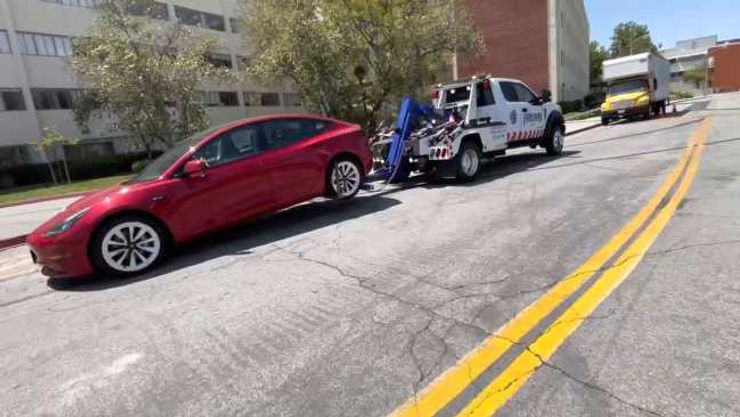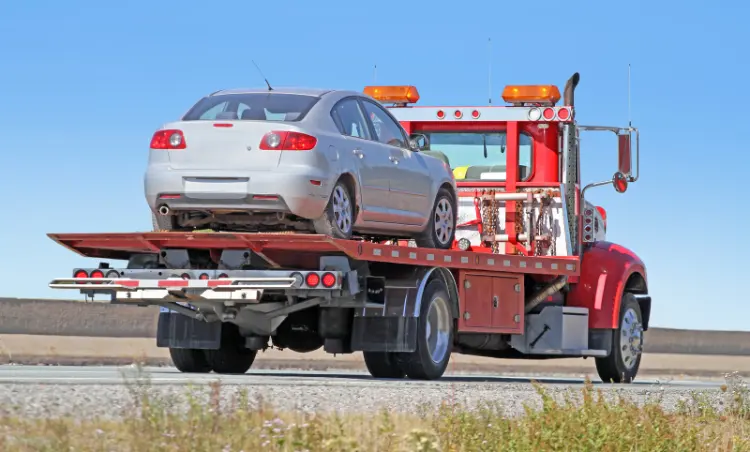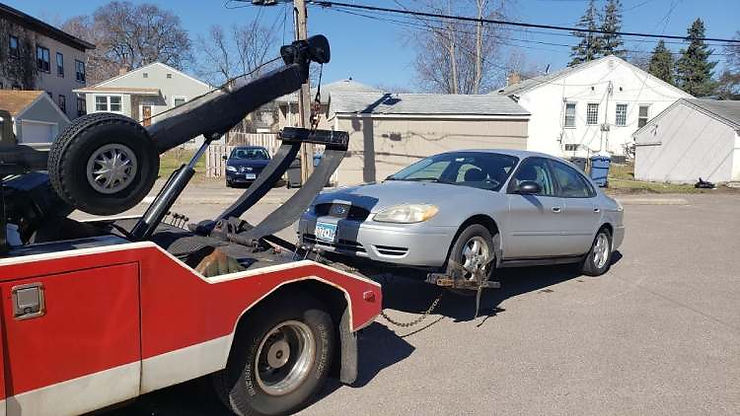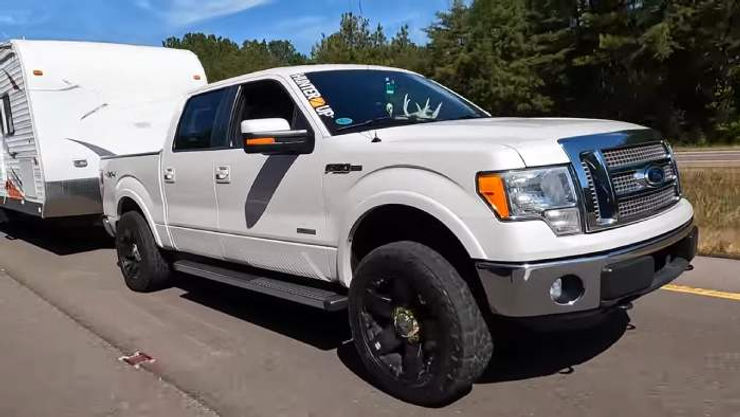Towing a rear-wheel drive car puts you at a loss, especially if it’s your first time doing it. With the right knowledge and tools, you can safely tow your rear-wheel drive vehicle without any problems.
You can tow a rear-wheel drive car in two ways: flat towing with the driveshaft disconnected or lifting the entire car using a tow truck.
The flat tow requires the driveshaft to be disconnected while lifting the entire car requires a tow truck and special equipment such as chains, hooks, and slings.
These are drivetrain lubrication, transmission concerns and the process of towing. Let’s explore each of these topics in more detail.
How Do You Tow a Rear Wheel Drive Car: 2 Options

-
Option One: Flat Towing with Drive Shaft Disconnected
-
Option Two: Lifting the Rear-Wheel-Drive Car
# Option 1: Flat Towing with Drive Shaft Disconnected
With professional assistance, you can disconnect the driveshaft and flat tow your vehicle without having to worry about potential damage to your drivetrain. This option requires a qualified mechanic or towing service to ensure that the process is done correctly.
Once the driveshaft is disconnected, you can then attach the tow bar to your car and safely tow it behind another vehicle. You should note that disconnecting the driveshaft when flat towing may not be suitable at high speeds or over long distances.
Consult your owner’s manual before flat towing your vehicle since some manufacturers advise against it altogether.
In the right circumstances, flat towing without connection to the driveshaft can be an efficient and cost-effective method of transporting a rear-wheel-drive vehicle.
# Option 2: Lifting the Rear-Wheel-Drive Car
Elevating your vehicle off the ground with a dinghy is a hassle-free option that ensures safe transportation for your beloved vehicle. With this method, you won’t have to disconnect the driveshaft, which is time-consuming and complicated.
Instead, use appropriate lifting equipment, such as a tow dolly or dinghy to raise the car’s rear wheels off the ground. Ensure that the lifting equipment is securely attached and can support the weight of your car before towing it.
You don’t want any accidents happening while on the road, so double-check everything before heading out. This option may seem more expensive than flat towing with disconnected driveshafts. But it’s worth investing in if you care about your car’s safety and longevity.
You can prevent damaging your rear-wheel-drive car’s transmission or other vital parts during transport using a dinghy or tow dolly.
Towing a Rear-Wheel Drive Vehicle: Additional Considerations

-
No 01: Considerations for Lubrication and Drivetrain
-
No 02: Transmission Concerns
-
No 03: Towing Process for Manual Transmission Cars
-
No 04: Towing Process for Automatic Transmission Cars
No 01: Considerations for Lubrication and Drivetrain
Regarding lubrication and drivetrain considerations, keeping your beloved ride safe and secure while on the road is crucial. When towing rear-wheel drive cars, you must ensure its properly lubricated drivetrain components.
This is especially true for long-distance towing or if you plan to tow frequently. Some vehicles may require additional lubrication during towing to prevent damage. In this case, you should use aftermarket lubrication pumps to ensure proper lubrication of the drivetrain components.
Otherwise, you risk damaging expensive parts such as the transmission or differential.
No 02: Transmission Concerns
When towing a vehicle with an automatic transmission, it’s crucial to follow proper procedures to prevent damage to the transmission system. Consult your owner’s manual for specific instructions on how to tow your vehicle.
In general, most rear-wheel-drive cars will tow safely if they are in neutral and the parking brake is released. Although, some models may require additional steps, such as disconnecting the driveshaft or using a special towing kit.
Towing an automatic transmission vehicle for long distances or at high speeds can also cause the transmission fluid to overheat and damage. To prevent this, we recommend stopping every 50 miles or so to let the engine idle for a few minutes and cool down.
Aside from that, you should check the fluid level before and after towing and top it off if necessary.
No 03: Towing Process for Manual Transmission Cars
It’s essential to securely attach the tow straps to the front of both vehicles’ frames. This step ensures that your vehicle remains safe while in transit.
Once you have attached the tow strap correctly, depress the parking brake on your towed vehicle and shift its gears to neutral. Remember to keep an eye on your rear-view mirror as you start driving to ensure that your towed vehicle is following safely behind.
It’s crucial to note that during stops and corners, the towed car should help slow down the towing vehicle by keeping a tight grip on the tow strap. This action helps maintain stability and prevents any sudden jerks or movements that could cause damage or accidents along the way.
No 04: Towing Process for Automatic Transmission Cars
Let’s now take a look at how to safely tow an automatic transmission vehicle without causing any damage or accidents.
First, check your owner’s manual to see if your specific make and model can be towed with all four wheels on the ground. Some cars may require additional equipment, such as a drive shaft coupling device, to keep the transmission from getting damaged.
-
Once you’ve determined that your car can be towed, raise and support the rear by using the appropriate lifting equipment.
-
Next, disengage the drivetrain by removing the driveshaft from the rear-wheel-drive car.
-
Then, attach a tow strap to the front of the frame and ensure the parking brake is released before beginning towing.
Towing an automatic transmission car in this manner requires that you not exceed 35 mph or travel more than 50 miles without stopping and cooling down.
Experience Smooth and Safe Towing of Your Rear-Wheel Drive Car
Following manufacturer instructions for your car’s particular make and model is pivotal. In the event of uncertainties, referring to the owner’s manual or seeking the guidance of an experienced mechanic is advised.
You can confidently hit the road and embark on new journeys without worrying about towing hazards if you use a sturdy tow bar or dolly.
Remember that towing results in additional wear and tear on your car’s components, which can be counteracted with regular vehicle maintenance. With proper techniques and safety guidelines, towing your rear-wheel-drive car is a hassle-free experience that enables further exploration and adventure.






